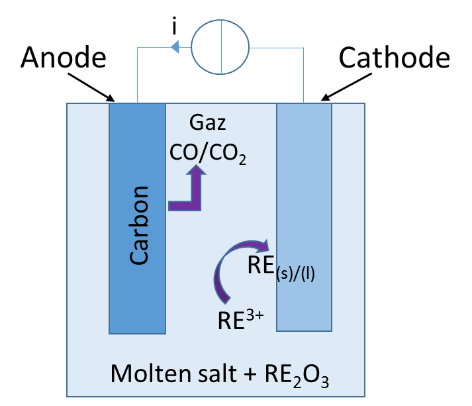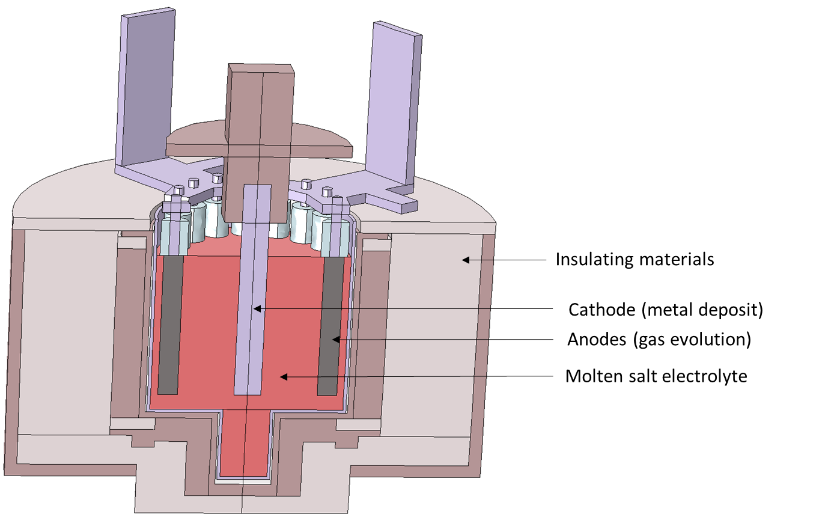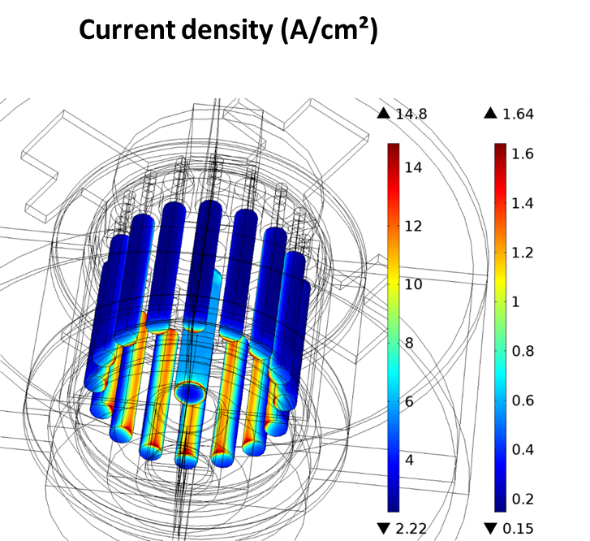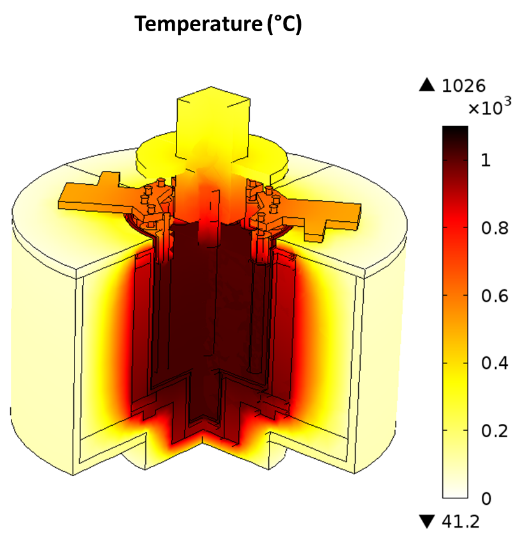Keywords
high temperature electrolysis, molten salt, electrolyte, dissolution
Context / Goal
Molten salt electrolysis reactors constitute a pyrometallurgical process used for metal recovery such as rare earth. The oxide form of the metal to be recovered is dissolved in an electrolyte made of molten salts. A current flow between two electrodes (anode and cathode) immersed in an electrolyte leads to the electrochemical reduction of the metal at the cathode while a gas evolves at the anode.
These processes are complex and difficult to implement experimentally, and using computational methods can be decisive to predict the behavior of the system under current (voltage, temperature, efficiency, potential failure zones…) and come up with improvements, for example, in terms of design.
The present case study is about a molten salt reactor for the recycling of neodymium. It was developed within the framework of the European REEcover project. The purposes of the study are:
-
to determine the current distribution in order to localize the reaction velocity on the electrode surface,
-
to predict the temperature distribution within the operating cell and,
-
to optimize the design of the reactor and the operating current.
Cross-section view of the electrolysis reactor for the recycling of rare earth
SIMTEC's Achievements / Results
Simulations of the current distribution are performed with the “secondary current” hypothesis. This type of approach, while being quite simple to implement, enables prediction of the reaction rate with a quite reasonable precision.
The thermal model recalls the electrical model for defining the heat sources and returns the temperature distribution inside the reactor, considering the three heat transport modes:
-
conduction in the solid parts,
-
convection in the electrolyte, treated with the “equivalent conductivity” method,
-
radiations, emitted from the surface of the hottest elements (around the electrolyte surface).
This model highlighted:
-
the cell voltage and the potential distribution,
-
the heterogeneity of the reaction rate at the electrodes, especially at the anodes,
-
the average temperature in the electrolyte during operation (~1020°C), to ensure the electrolyte remains liquid, and
-
the different thermal loss contributions: conductive losses through the walls vs. radiative losses.






